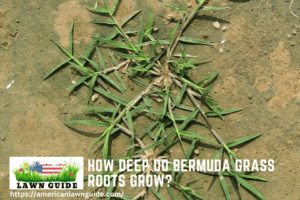New grass seed can survive a frost if it is properly protected. Seed that is exposed to the elements can be damaged by the cold weather and may not germinate. To protect your seed, you can cover it with a thin layer of straw or another insulation material.
You should also keep the area around your seedbeds clear of debris so that the heat from the sun can reach the ground and warm it up.
As the weather starts to cool down and the first frosty nights of fall begin, you may be wondering if your new grass seed will survive the cold. The answer is yes! While a hard frost can damage tender plants, grass seed is much more resilient.
In fact, some people actually recommend planting grass seed in early fall so it has a chance to get a head start before winter sets in. Of course, there are a few things you need to do to make sure your new grass survives the frost. First, make sure you choose a hardy variety of grass that is suited for your climate.
Next, plant the seed in well-drained soil and water it regularly so it doesn’t dry out. Once the seeds have germinated and begun to grow, protect them from extreme cold by covering them with straw or another insulating material. With just a little bit of care, your new grass will be able to withstand anything Mother Nature throws at it – even a Frost!
Will Baby Grass Seedlings Die In Freezing Temps: Perennial Ryegrass Tested
Will Frost Hurt New Grass Seedlings?
When grass seedlings are young, they are more susceptible to damage from frost. If the temperature dips below freezing, the blades of grass will start to turn brown and die. This can happen overnight, so it’s important to keep an eye on the forecast if you’ve recently seeded your lawn.
Once the grass is a few inches tall, it will be better able to withstand cold weather.
How Cold is Too Cold for New Grass Seed?
How cold is too cold for new grass seed? The answer to this question depends on the type of grass seed you are using. Some types of grasses, such as Kentucky bluegrass, can germinate and grow in cooler temperatures than others, such as bermudagrass.
In general, though, most grass seeds will not germinate and grow well if the temperature is below 50 degrees Fahrenheit. So, if you’re thinking about planting new grass seed, make sure to check the forecast and choose a time when temperatures are expected to be at least 50 degrees or above.
What If It Freezes After I Plant Grass Seed?
If it freezes after you plant grass seed, the seed may not germinate. The ideal temperature for grass seed germination is between 60-70 degrees Fahrenheit. If the temperature drops below freezing, the seed will not be able to sprout.
You can try covering the seeded area with a tarp or burlap to insulate it and help keep the ground warm.
How Do You Protect New Grass Seed from Frost?
When it comes to new grass seed, protecting it from frost is crucial. Frost can cause the grass seed to die, which will result in a patchy lawn. There are a few things you can do to protect your new grass seed from frost:
- Water the seed regularly. This will help keep the ground moist and will also prevent the seed from drying out.
- Cover the seed with a thick layer of straw. This will insulate the ground and protect the seed from cold temperatures.
- Make sure you plant the seed in an area that gets full sun. This will help promote growth and prevent the seed from dying.
By following these tips, you can ensure that your new grass seed has a fighting chance against frost damage.

Will One Night of Frost Kill New Grass?
When grass begins to grow in the spring, it is very sensitive to frost. A single night of frost can kill new grass, and may even damage established grass. If you are concerned about your lawn being damaged by frost, there are a few things you can do to protect it.
One option is to cover your lawn with a tarp or other type of protective covering. This will help keep the ground warm and prevent frost from forming on the blades of grass. Another option is to use a heated mat or pad underneath the covering.
This will help keep the ground even warmer, and protect your lawn from any potential damage. If you don’t have time to cover your entire lawn, you can also focus on protecting specific areas that are more likely to be damaged by frost. For example, if you have an area of your lawn that gets sun during the day but shade at night, this area is more likely to experience frost damage.
You can cover this area with a tarp or other type of protection to help reduce the risk of damage. Ultimately, whether or not one night of frost will kill new grass depends on several factors. The amount of moisture in the soil, the temperature of the air, and the wind chill all play a role in how much damage Frost can cause.
However, by taking some simple precautions, you can greatly reduce the risk of Frost damaging your lawn this spring.
Should I Water New Grass Seed before Frost?
It’s that time of year again – the leaves are changing color and falling to the ground, and there’s a chill in the air. You know what that means – it’s time to start thinking about preparing your lawn for winter. One question you may have is whether or not you should water new grass seed before frost.
The answer is yes, you should water new grass seed before frost. This will help the seeds germinate and grow faster once spring arrives. Here are a few tips on how to do this:
- Water the area where you’ve planted the seed lightly every day until frost arrives.
- Once frost has arrived, continue watering once per week, making sure to soak the ground deeply each time.
- If possible, cover the seeded area with a layer of straw or mulch to protect it from freezing temperatures.
Following these simple tips will help ensure that your new grass seedlings are off to a strong start come springtime.
What Temperature Kills Grass Seed?
One of the most important things to consider when starting a new lawn is the temperature of the soil. The ideal temperature for grass seed germination is between 60-70 degrees Fahrenheit. However, grass seed can still germinate at lower temperatures, as long as the soil isn’t frozen.
At temperatures below 60 degrees, grass seed will germinate more slowly and may not grow as vigorously. If the soil temperature gets much below 50 degrees, the grass seed may not germinate at all. In general, it’s best to wait to sow your grass seed until after the last frost date in your area.
If you do need to sow your grass seed before the last frost date, you can help protect it from cold damage by covering it with a layer of straw or another type of mulch. This will insulate the seeds and help keep them warm enough to germinate successfully.
Conclusion
It’s that time of year again when the weather starts to cool off and we start thinking about planting grass seed. But before you sow your new lawn, you need to consider the possibility of a late frost. Will your new grass seed survive if it’s hit by a cold snap?
The answer is maybe. It depends on the type of grass seed you’re using and how cold it gets. If the temperature dips below freezing, most grasses will go dormant and won’t start growing again until the weather warms up.
However, there are some varieties of grass seed that are more cold-tolerant than others. If you’re worried about a late frost damaging your new lawn, talk to your local nursery or garden center about which type of grass seed is best for your area. They can help you choose a variety that has a better chance of surviving a cold spell.




